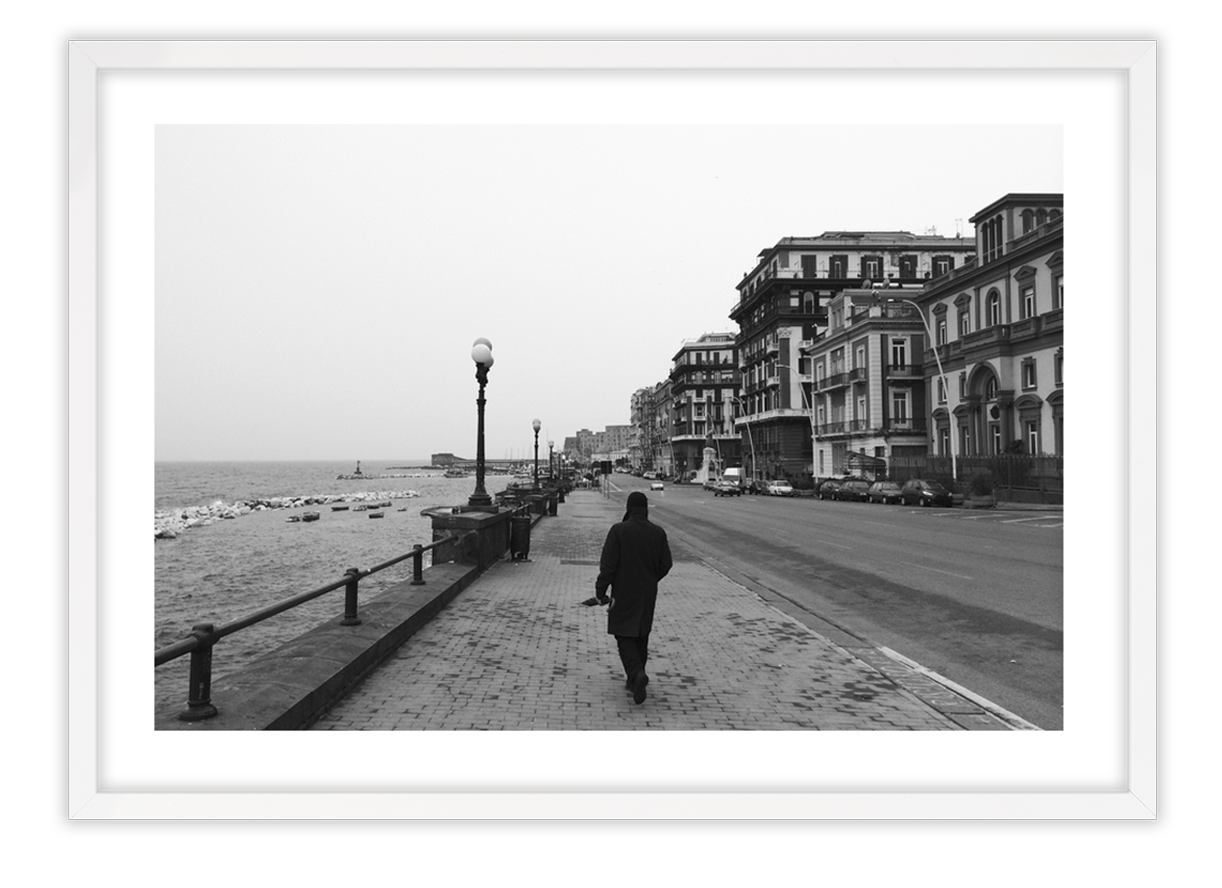 02/21/2025
02/21/2025
by Michael McCarty
Founder, Tribeca Printworks
The right framing can turn an ordinary photo into a masterpiece by changing the viewer’s perspective and guiding the eye to certain parts of an image. Framing also complements an image’s storytelling by bringing in focus, emotion and depth. The elements you employ can vary widely — from emphasizing a subject through light and shadow to using surrounding buildings as the frame.
Learn more about the varied examples of framing in photography, and experiment with them to see how they elevate your skills.
Find Your Subject
The first step to creating an eye-catching image is identifying your subject — person, animal, landscape or object. Every element in your image should draw attention to the subject, complementing it without overpowering it.
Although your subject is the main attraction, it doesn’t need to be centered to achieve a stunning effect. The rule of thirds is a well-known framing device that enables photographers to take more interesting photos where the subject is not in the center of the image. It involves dividing the image into nine sections using a grid and placing your subject either along the gridlines or at an intersection point.
Use Key Photography Techniques to Enhance Framing
Once you have your subject, enhance your photography framing with these techniques:
Create Depth and Interest
Incorporating foreground elements or getting closer to the foreground while focusing on your subject increases an image’s depth. Foreground objects like railings, branches, grass or flowers build context for your subject’s surroundings and make the picture more visually interesting.
You can also create interest by changing your camera’s depth of field, using either a wide or deep aperture. A shallow depth of field, achieved with a wide aperture, highlights the subject by isolating it and making the areas behind and in front of it unfocused. A deep depth of field, captured using a small aperture, extends the plane of focus and integrates your subject with the background — other elements will be in focus alongside your subject.
Use Leading Lines
Fences, roads, rivers, mountain ranges and branches can be leading lines for your viewer. These image components direct the viewer’s gaze to the subject, such as a curved road leading to a building.
Leading lines — whether diagonal, horizontal or vertical — create a sense of movement, making an image feel more dynamic. Bring both depth and movement to an image through converging lines, which recede into the distance and appear to meet at the vanishing point.
Leverage Negative Space
The emptiness of negative space can be advantageous. If your subject is a person looking to the side, you could leave more negative space in whichever direction they’re looking toward, creating an “open” feel. Using the rule of thirds lets you strategically place your subject within the negative space so that they remain a focal point.
Negative space can help a composition look less crowded or small, but it can also convey loneliness, serenity, mystery or anticipation.
Play With Symmetry and Patterns
Symmetry creates a sense of wholeness and balance in that both sides of an image mirror each other. This technique diverges from the rule of thirds to form unique and eye-catching compositions. A reflection in a pool of water or a mirror can be a framing element that creates harmony through symmetry.
Repeating patterns are another way to establish framing — they serve a similar purpose to leading lines that guide the eye to a specific point.
Explore Perspectives and Angles
Use angles and varied perspectives to create intrigue. Some examples include:
- Shooting through objects: Shooting through an object lets you use the foreground to isolate a subject and make the overall photo more complex and layered.
- Shooting from below: Capturing your subject from below offers dramatic framing and can convey intimidation, power or strength.
- Shooting from above: From-above shots provide drama from a different perspective. You can make a subject appear lonely amid a large, open landscape or capture the ocean from a cliffside to show its vastness.
- Using tight framing: Tight framing techniques such as close-ups highlight details like textures and facial expressions. They can also enhance a composition’s intensity to communicate strong emotions.
Avoiding Common Framing Pitfalls
As you practice framing photography techniques, be aware of common missteps that detract from the beauty of your photos:
- Cropping too much: When editing your photos, avoid cropping too closely and cutting off essential elements. For example, if you shoot through a flower bush to use it as your foreground, avoid cropping so much that it becomes insignificant in the final piece.
- Misaligning the shot: A misaligned horizon negatively affects the picture’s balance and prevents symmetry. Using a tripod and your camera’s viewfinder grid can ensure an even shot.
- Neglecting your background: Nothing in the background should distract from the focal point, such as cluttered items or overpowering patterns.
Framing Photography Examples
Studying examples of iconic framing in photography can help you master the craft. Below are some well-known photographers and individual examples of framing:
- Steve McCurry: In McCurry’s “Afghan Girl,” the headscarf’s fabric creates natural framing that accentuates the subject, Sharbat Gula.
- Herb Ritts: Ritts’ photography is recognized for its simplistic framing, geometric shapes and natural lighting that create strong compositions, such as the 1998 piece “Versace Dress, Back View, El Mirage.”
- Nick Knight: Knight uses off-center framing in his fashion photography to invoke various moods, such as in the 1997 piece “Parasol.”
In addition to perusing photos, consider reading photographer interviews to familiarize yourself with the technical details of how they set and edit their shots.

Frame Your Way to Stunning Photos With Tribeca Printworks
Once you have experimented with framing techniques, you’ll want to immortalize these photos as prints — whether as proof of your progress, to sell to clients or to decorate your space with. Tribeca Printworks can create giclee prints of your photos and craft custom, high-quality frames that will complement and protect your images.
Get in touch with us to find out how to elevate your work with our premium printing services, or order your prints today.
FAQs on Framing in Photography
If you’re still unsure about photography framing, here are a few commonly asked questions.
What Are the Main Framing Types in Photography?
Light and shadow, architectural, natural and geometric are the four main framing categories.
How Can You Develop Your Framing Skills?
You can strengthen your ability to recognize framing opportunities through regular practice, such as:
- Urban exploration: Explore your city and identify architectural elements that make effective framing devices.
- Nature walks: Try using tree canopies, flower bushes and rivers as natural framing elements.
- At-home experiments: Start with home objects like doorframes, shelves, cabinets and curtains.
What Is the Frame Within a Frame Technique?
This method involves creating a secondary frame within a photo by using an object like a window, bridge or arch. “Versace Dress, Back View, El Mirage” offers an example of this technique using the dress’s fabric.

